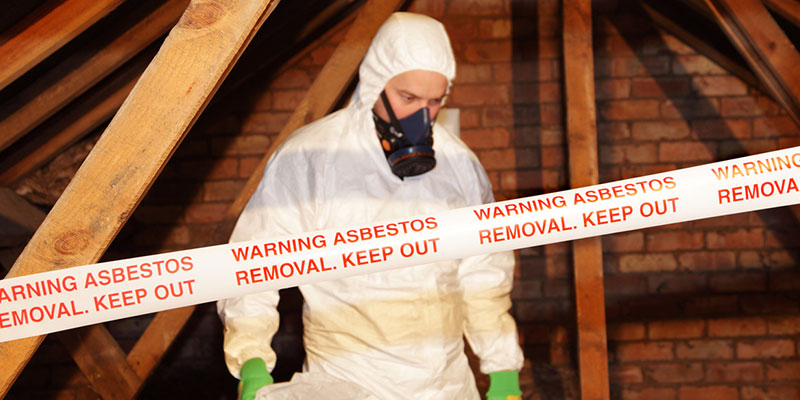One of the challenges of asbestos abatement is that asbestos was used extensively in construction materials for decades. There are all sorts of materials that could contain asbestos, including flooring, roofing, insulation, fire-proofing, walls, ceilings and more. The danger of asbestos lies in the fibers that can be released and inhaled when these materials are disturbed. Careful planning goes into any asbestos abatement job to protect the inhabitants of the building and the technicians performing the asbestos removal.

Every asbestos abatement is different because every building and situation is unique. Here is an overview of the typical asbestos abatement process:
- Planning: Testing is performed first to determine the exact location and extent of asbestos-containing materials. Once this is established, careful planning can be conducted.
- Preparation: These crucial steps keep the asbestos fibers in a limited area during removal. The hazard area will be marked off, and the air ducts will be sealed. The HVAC system will be disabled, and the area sealed off with plastic sheeting and air pressure differentials.
- Removal: Wet methods are generally used for removal, as well as hand tools that limit the creation of dangerous airborne fibers. Technicians wear protective clothing and respirators and use a decontamination area when exiting the removal area.
- Final cleaning and retesting: Once the asbestos-containing material is removed and properly disposed of, a final cleaning with HEPA vacuuming will be completed. Testing is repeated to ensure that the area is now free of asbestos. This test must be completed before protective barriers are removed.
